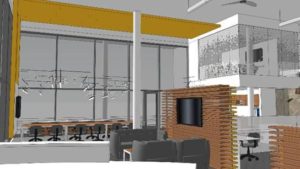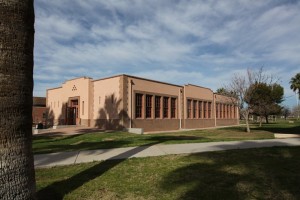Sep 19, 2016
An international architecture firm has leased and will renovate a historic mid-century building in Phoenix.
Minneapolis-based Cuningham Group Architecture has leased the Farmers & Stockmens Bank Building at Washington and 50th streets near Papago Park.
The 6,000-square-foot building was built in 1951 by famed Los Angeles architect William Pereira.
He also designed the Transamerica Pyramid in San Francisco, Luke Air Force Base in Glendale, CBS Television City in Los Angeles, the Arizona State Prison in Florence and much of Los Angeles International Airport.
The Washington Street building has a historic designation from the city of Phoenix.
Cuningham Group currently has its Phoenix offices near First Avenue and McDowell Road north of downtown Phoenix.
The architecture firm plans on moving this fall.
“For a firm such as ours that deeply respects good design, it is an honor to make this landmark our home,” said Cuningham Group Principal Nabil Abou-Haidar. “There is a clean-lined simplicity to the building that remains attractive to this day. It is certainly an approach we bring forward in contemporary architecture for our clients, and in our other offices around the world.”
Cuningham’s Phoenix office has approximately 20 architects and designers.
The firm’s project portfolio includes work in South Korea, China as well as Disney’s California Adventure.
Cuningham Group is leasing the 1950s era bank building from owners Mike and Gary Smith. They own Phoenix-based Jokake Companies, which acquired the property and in partnership with the city of Phoenix in 2015.
They restored the building’s exterior.
“We are delighted we were able to save the historic property,” said Jill Clements, president of Jokake Real Estate Services. “There are not many historic buildings left in the Phoenix area. So when we were able to save this one, we were thrilled. The Smiths are happy to be working with such a prestigious architectural firm as Cuningham Group and look forward to their long-term tenancy at the property.”

